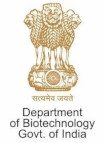Systematic evaluation of the impact of defacing on quality and volumetric assessments on T1-weighted MR-images.
| Title | Systematic evaluation of the impact of defacing on quality and volumetric assessments on T1-weighted MR-images. |
| Publication Type | Journal Article |
| Year of Publication | 2021 |
| Authors | Bhalerao GVivek, Parekh P, Saini J, Venkatasubramanian G, John JP |
| Corporate Authors | ADBS Consortium |
| Journal | J Neuroradiol |
| Date Published | 2021 Mar 13 |
| ISSN | 0150-9861 |
| Abstract | BACKGROUND AND PURPOSE: Facial features can be potentially reconstructed from structural magnetic resonance images, thereby compromising the confidentiality of study participants. Defacing methods can be applied to MRI images to ensure privacy of study participants. These methods remove facial features, thereby rendering the image unidentifiable. It is commonly assumed that defacing would not have any impact on quantitative assessments of the brain. In this study, we have assessed the impact of different defacing methods on quality and volumetric estimates. MATERIALS AND METHODS: We performed SPM-, Freesurfer-, pydeface, and FSL-based defacing on 30 T1-weighted images. We statistically compared the change in quality measurements (from MRIQC) and volumes (from SPM, CAT, and Freesurfer) between non-defaced and defaced images. We also calculated the Dice coefficient of each tissue class between non-defaced and defaced images. RESULTS: Almost all quality measurements and tissue volumes changed after defacing, irrespective of the method used. All tissue volumes decreased post-defacing for CAT, but no such consistent trend was seen for SPM and Freesurfer. Dice coefficients indicated that segmentations are relatively robust; however, partial volumes might be affected leading to changed volumetric estimates. CONCLUSION: In this study, we demonstrated that volumes and quality measurements get affected differently by defacing methods. It is likely that this will have a significant impact on the reproducibility of experiments. We provide suggestions on ways to minimize the impact of defacing on outcome measurements. Our results warrant the need for robust handling of defaced images at different steps of image processing. |
| DOI | 10.1016/j.neurad.2021.03.001 |
| Alternate Journal | J Neuroradiol |
| PubMed ID | 33727023 |

